#aquatic creatures
Note
crocodile icefish pls they are my favorite bony fish. if u want a cartilaginous fish greenland sharks are my fav of those 👀👀👀
Today on CHUNK! FUNK! GUNK! We rate
the CROCODILE ICEFISH:


1/10 Chunk
10/10 Funk
0-1/10 Gunk
Today is the crocodile icefish! (also called the white-blooded fish because apparently they don’t have hemoglobin in their blood) Awhile ago I did the other half of this anonymous user’s request, so today I finally finish their ask!
They are very bony, low chunk. The crocodile icefish is super funky though, getting style points from its cool frill and see-through bits. Also, it doesn’t have red blood cells, which is very weird and I’m kind of jealous. Extreme funk. I couldn’t find much in my brief research about their slime or mucous secretion, so I am left to assume that if they have any, it’s probably not that remarkable. Low gunk.
Overall: 8/10
It reminds me of something I would see in the game Subnautica! Also they’re really cute. Look at its little face.

What a guy (=´∀`)
#crocodile icefish#white-blooded fish#chunk funk gunk#chunk#funk#gunk#asks open#ocean#ocean animals#arctic fish#cool fish#fish#ocean fish#creatures#aquatic creatures#what a guy
478 notes
·
View notes
Text
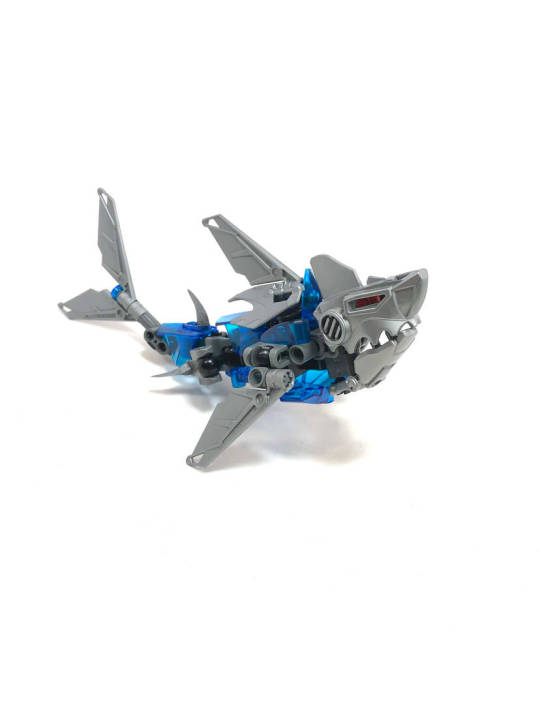
Tibyra, Okotan Shark
Has a tendency to utter a certain vowel sound.
Source
Creator: Antak3000
#lego#bionicle#armor#armor plates#eyes#red#red eyes#fins#razor#razor fins#animal#animal shape#rahi#aquatic#aquatic rahi#aquatic creatures#aquatic animals#bionicle g2#sea animals#shark#fish#big fish#jaw#okoto
82 notes
·
View notes
Text

The Ndamathia [Kenyan mythology; African mythology]
The Kikuyu are a somewhat lesser-known ethnic group located mainly in central Kenya. These people have (or had, I am uncertain whether this religion is still being practised) a religious ceremony that was held every few decades and was connected to a creature called the Ndamathia, a creature associated with rainbows. It was the Ndamathia which made rainbows appear in the sky.
This being was a giant aquatic snake-like reptile of incredible length (said to be as long as the rainbows it created). At the end of its enormous tail grew magical hairs that had potent medical properties.
A complicated procedure was required to harvest these hairs, however. First, the creature had to leave the deep rivers in which it lives. This was done by summoning it with a special ceremonial horn, and when the Ndamathia was on land, it was distracted by a beautiful girl. The monster was dangerous, however, and had to be drugged with powerful medicine, which was administered by splashing it on the ground before the girl (which was traditionally done by the same young girl). The reptilian creature would then proceed to lick up the water containing the drug.
In addition, the girl was covered in castor oil (which is made from beans of the castor plant) to make her slippery. The idea was that if the monster tried to grab the girl, she would be too slippery to hold and she would escape from its maw.
The Ndamathia then followed the maiden away from the water, but as it was an incredibly long creature, it took multiple hours of walking before its tail finally left the water. A group of warriors was waiting patiently for this moment and jumped at the tail as soon as it was on land.
Each warrior plucked as many hairs as possible. Even though the Ndamathia was under the influence of medicine, plucking its tail hairs caused it great pain and the creature would become furious. It immediately returned to the water at great speed, so the warriors had to hide after plucking the hairs. When the giant creature arrived, it would find nobody and decided to go back to the depths from which it came.
As the story goes, the girl who acted as bait to lure the creature away from the water would have an important position in Kikuyu society when the ceremony was over, as she was regarded as a heroine. The priests would then slaughter an ewe, a bull and a male goat. They would then proceed to cut the skins of the ewe and the goat into ribbons and dip them in a liquid consisting of the blood mixed with the stomach contents of the slaughtered animals. The hairs of the Ndamathia were tied to these ribbons to make bracelets, which were to be worn by the elders on the ankle and wrist. When this was all done, a giant celebration would be held.
When Christianity established a foothold in the region, the missionaries tried to convince the indigenous people that the Ndamathia was actually their version of the Christian devil, and the creature was villainised. This made an impact on the indigenous folktales that is still visible today: the Kikuyu’s translation of the Bible translates ‘devil’ as ‘Ndamathia’.
Sources:
Hazel, R., 2019, Snakes, People and Spirits, Volume 1: Traditional Eastern Africa in its Broader Context, Cambridge Scholars Publishing, 567 pp.
Kenyatta, J., 1978, Facing Mount Kenya: the traditional life of the Gikuyu, African Books Collective, 260 pp.
Karangi, M. M., 2013, The creation of Gikuyu image and identity, in: Revisiting the roots of an Africna shrine: the sacred Mugumo tree: an investigation of the religion and politics of the Gikuyu people in Kenya, p.24 ch.2., Karangi, M.M. (editor), Lambert.
Karanja, J., 2009, The Missionary Movement in Colonial Kenya: the Foundation of Africa Inland Church, Cuvillier Verlag, 227 pp.
(image source: Steven Belledin. The image is card artwork for Magic: the Gathering and depicts an unrelated seamonster, but I chose it because it fits with the description and I rather like the illustration).
#Kenyan mythology#African mythology#aquatic creatures#monsters#mythical creatures#mythology#bestiary
125 notes
·
View notes
Text
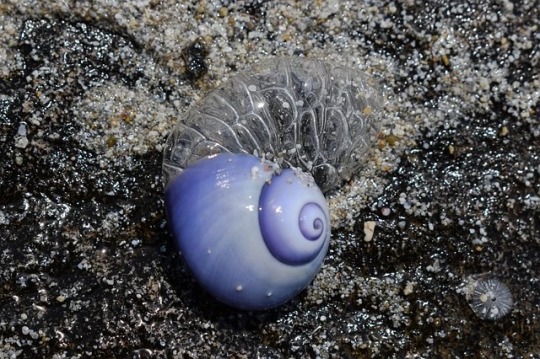
Violet sea snail
#violet sea snail#sea snail#shell#sea creatures#marine biology#purple#sea animals#sea life#marine animals#marine creatures#ocean animals#aquatic life#aquatic animals#ocean life#ocean creatures#aquatic creatures#marine biodiversity
989 notes
·
View notes
Text
Did you know, that nudibranch’s (aka. Sea slugs) are hermaphrodites, which means that they have both male and female reproductive systems, meaning that when they find a mate, they inseminate each other at the same time; they do this by spearing each other with their genitalia.
Here is my favourite sea slug, the butterfly cyerce nudibranch, and they feed on algae:

#animal facts#animals#facts#random facts#aquatic#aquatic creatures#sea slug fact#sea slug facts#sea slugs#sea slug#butterfly sea slug#butterfly cyerce nudibranch
17 notes
·
View notes
Text
The gongoozler's character sheet(?)

#i doubt anyone gonna read this#but looking cool is enough too lmao#the gongoozler#crankgameplays fanart#ethan nestor fanart#unus annus#unus annus fanart#i made this#aquatic creatures#venomous boi#wkm gongoozler#ghiertor hc#swampy freshwater fucker#cryptid n horror corner
268 notes
·
View notes
Text


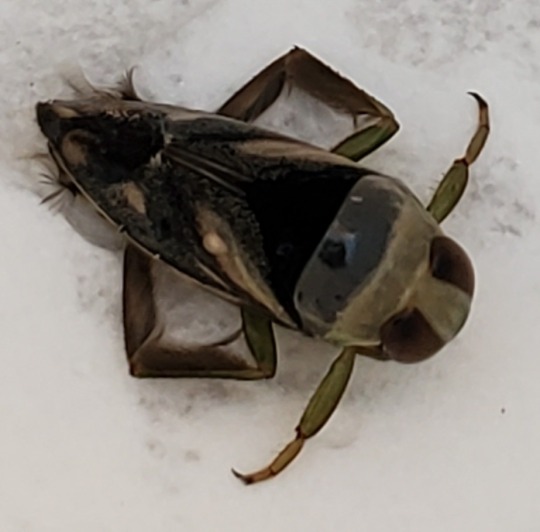
Backswimmer in the subgenus Paranecta that I found hanging out in my pool.
Backswimmers (Hemiptera: Notonectidae) are a family of predatory aquatic bugs. Unlike water boatmen, which swim right (dorsal) side up, backswimmers swim on, you guessed it, their backs.
These insects can attack prey as large as tadpoles and have a needle-like proboscis that can result in a pretty painful bite. They are not only good swimmers, but also flyers, which allows for easy dispersal between small ponds and other bodies of water (like my pool).
Their abdomen is covered in lots of tiny hair-like structures for trapping air against the body. This allows the insect to breath for a time underwater and keep its body dry.
#bugs don't belong in the pool#thankfully it moved on in less than a day#probably didn't appreciate having its picture taken#backswimmer#bugs#paranecta#hemiptera#notonectidae#aquatic creatures#aquatic life#biology#educational#nature#nature photography#pool time#biodiversity#animals#inaturalist#arthropods#entomology#insect appreciation#insects#predator#bugblr#invertebrates#no pool for you
23 notes
·
View notes
Text

i love my frogs so much
24 notes
·
View notes
Text


Office - the top piece is a redraw of the bottom piece, which I did years ago. I’ve been working on my art for a long time since then, though I still have a long ways to go. What do you think?
My original art made in Procreate, image description in alt text.
#office#surreal art#aquatic art#surreal#underwater#underwater art#underwater office#office view#office art#art journey#redraw#artist journey#original art#small artist#water art#aquatic creatures#underwater sea#sea creatures#sea creature art#sharks#shark art#office sharks#queue should see this#transcendragon art#procreate art#artists on tumblr#digital art#fantasy art
14 notes
·
View notes
Text
I love the Seattle aquarium. Have ya noticed? What a lovely way to spend the day. There is so much natural grace and beauty in this seal as it swims effortlessly toward me to say hello.
9 notes
·
View notes
Note
Can you do the blue dragon sea slug? They're adorable and metal af because they eat man o wars
Today on CHUNK! FUNK! GUNK! We rate
the BLUE DRAGON SEA SLUG:

1/10 Chunk
8/10 Funk
8/10 Gunk
These guys are so pretty- and apparently very dangerous! They’re very skinny (but probably squishy), low chunk. The colors, appearance, and diet are all super unique and cool. High funk. From my brief research, it seems like they have specialized mucous to neutralize the venom of man’o wars alongside using the venom themselves. High funk.
Overall Rating: 7/10
So cool! I love a sea creature with bright colors like this. It really is super funky how they eat one of the most dangerous creatures I know of.
Also I found a picture that claims to be a baby, but I know better than to trust one image when I can’t find any other evidence of them looking like this.
While it is likely just an art doll, have this photo because it’s flipping CUTE

#chunk funk gunk#chunk#funk#gunk#blue dragon sea slug#sea slug#blue dragon#ocean#ocean animals#creatures#aquatic creatures#asks open#little guy
89 notes
·
View notes
Text


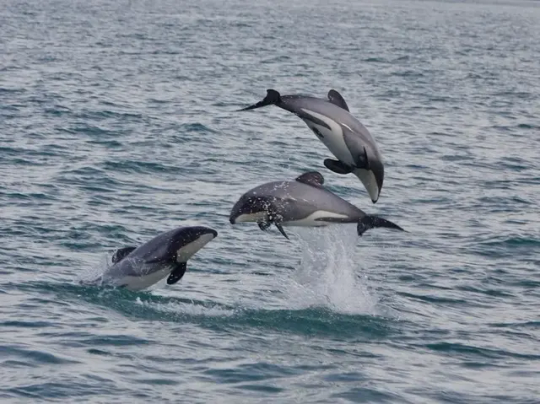
Honestly, these 'lil guys are kinda cute.
Look at their stubby little faces and rounded dorsal fins and that pretty color pattern! Long may they swim undisturbed in the beautiful jade-green waters of Lyttelton Harbour.
5 notes
·
View notes
Text
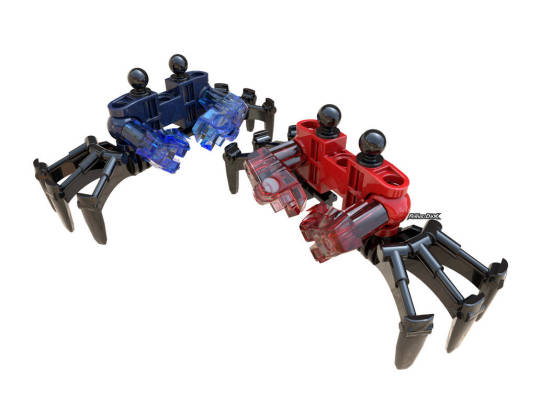
Good Crab
Masters of the sidestep.
Source
Creator: FeliusDax
#lego#bionicle#animal#animal shape#rahi#aquatic#aquatic rahi#aquatic animals#aquatic creatures#arthropods#crustacean#crab#claws#pincers#multiple limbs#multiple legs#legs#multiple models#translucent#eyes#big eyes#googly#googly eyes
98 notes
·
View notes
Text

The Tangi [Scottish, Shetland folklore]
There are lots of folktales about supernatural horses that live underwater and entice people into mounting them. Once the victim does so, they find themselves unable to dismount and the horse takes its prey underwater to drown them. The most famous of these creatures are the Scottish Kelpie and the Welsh Ceffyl Dŵr, though there are lots of similar aquatic horse monsters from British, Germanic and Scandinavian folktales. They are related and come from the same root story.
In the Shetland Islands, however, there are two such creatures, and while they are undeniably similar, surprisingly they are said to be two distinct kinds of beings that exist in different habitats. The Njuggel (or ‘Shoopiltee’ in Northern Shetland, among other names) resides in lakes and other fresh bodies of water, whereas the Tangi (also Tangie) is a marine monster. Keep in mind however that this distinction is not set in stone (folklore is hardly an exact science, of course) and in some places the Njuggel and the Tangi are considered to be synonyms.
In the Orkney islands of northern Scotland, the Tangie would appear either as an old human covered in seaweed (true to its name, as the name ‘Tangie’ is likely derived from ‘tang’ which is a local term for seaweed) or as an aquatic horse. This Tangie would jump out at unwary travelers, and it took a particular liking to young women, kidnapping them from the banks of the Scottish lakes and dragging them into the depths to be devoured.
In places where the two are said to be separate monsters, the following distinction is usually made: a Njuggel appears as a white or grey horse with a wheel for a tail that drowns its victims in lakes. A Tangi, on the other hand, is black or dark grey and has no wheel. Tangis are shapeshifting creatures and sometimes appear as cows, other animals, or as humans. When taking the form of a human, a Tangi usually chooses to appear as a handsome young man and seeks out girls to seduce and have sex with. Sometimes they go the extra mile and abduct a girl to marry her. Being associated with the sea, they commonly haunt shores but these creatures make their homes in seaside caverns.
Like its cousin the Njuggel, a Tangi is engulfed in a blue flame when galloping at high speed. Sailors sometimes claimed to have seen one of these creatures as a distant blue flash that raced across the shore.
One old account of these creatures also claimed that they have wings and the uncanny ability to locate any object that fell or was thrown into the ocean, regardless of depth. These claims are not backed by any other sources. However, they do have an important trait that sets them apart from Kelpies, Njuggels, Nixen and the like.
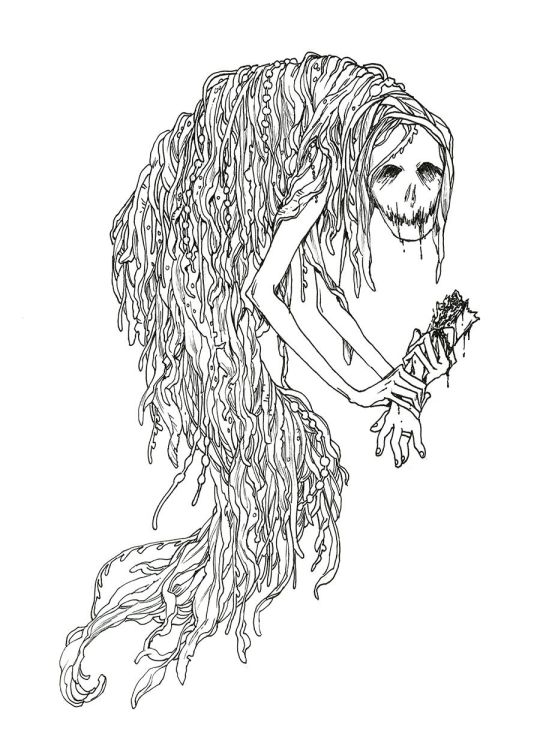
Whereas most Kelpie-like monsters are said to make people mount them and then drown their victims, the Tangi does not need to be mounted. It can cast a spell on its victims by galloping in circles around them. When under the influence of the Tangi’s magic, the victim becomes hypnotized and immediately tries to drown themselves, usually by jumping off a cliff into the ocean. Those who survive find themselves in a dazed state which lasts for a few days at most.
They are not invincible however and share the same weaknesses as the Njuggels: they are afraid of fire, can be injured with iron and lose their power if you utter their name. For example, one story tells of a man who encountered a Tangi. The black horse started running in circles around him but he managed to stab it with an iron knife. The creature ran away and disappeared.
Sources:
Teit, J. A., 1918, Water-beings in Shetlandic Folk-Lore, as Remembered by Shetlanders in British Columbia, The Journal of American Folklore, 31(120), p.180-201.
Lecouteux, C., 2016, Encyclopedia of Norse and Germanic Folklore, Mythology, and Magic.
Monaghan, P., 2004, The Encyclopedia of Celtic Mythology and Folklore, Facts on File Library of Religion and Mythology, 512 pp.
Pérez-Lloréns et al., 2020, Seaweeds in mythology, folklore, poetry and life, Journal of Applied Phycology, 32, 3157-3182.
(image source 1: orig03 on Deviantart. The image actually depicts a black Kelpie, but I figured it’s fine since the Tangi is related and similar)
(image source 2: unknown, sorry)
#Scottish mythology#British mythology#aquatic creatures#monsters#Kelpie#mythical creatures#fey#bestiary
75 notes
·
View notes
Text
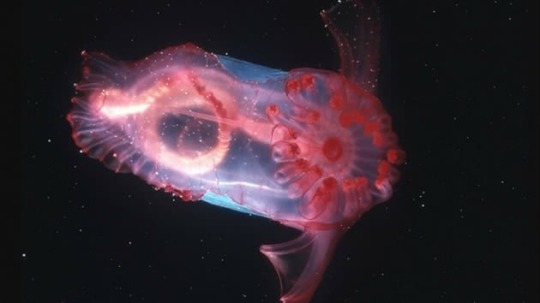
source
#sea creature#sea creatures#see through#see through creatures#clear#creatures#biology#marine biology#upload#nature#animals#ocean life#ocean animals#ocean creatures#sea life#sea animals#marine life#marine animals#aquatic life#aquatic creatures#aquatic animals#exotic sea creatures#red#pink#blue#underwater#marine biodiversity
152 notes
·
View notes
